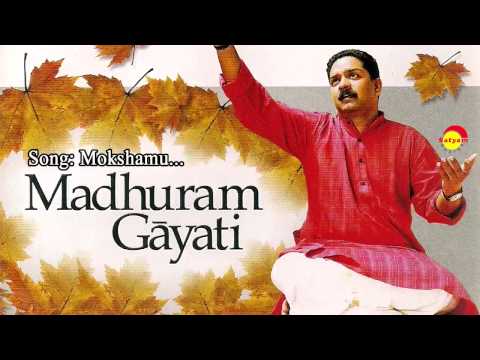Some other famous compositions in Yamunakalyani are Krishna Nee Begane by Vyasatirtha, Bhavayami Gopalam by Annamacharya, Pibare Ramarasam by Sashiva Brahmendra, O Rama Nee Nama by Bhadrachala Ramadasu, Sri Ramachandra Kripalu by Sant Tulsidas and Haridasulu by Tyagaraja.Kadana vatsava hari by Vijayadasa in Kannada. Film Songs Language:Tamil. Cheluve nAchade pELu shri venkaTeshago vAsavArchita kanchi varadarAjanigo asuradi shri mushNa varAhanigo shEshashAyiyAda shriman nArAyaNago sAsira nAmadoDeya aLagireeshago sharaNAgata poreva sAranga pANigo varagaLa neeva shrinivAsago kurukulAntaka namma rAja gOpAlago sthiravAgi pELu purandara viTTala rAyanigo Video link. Sri rAmachandra kripAlu – tulasidAs. Composer: Sant Tulasidas Ragam: Yaman Talam: Misra chaapu Aro: N3 R2 G3 M2 P D2 N3 S Ava: S N3 D2 P M2 G3 R2 S. The Ashtapadi (‘Kshana maduna’, Vaghdeeshwari, misrachapu, Jayadeva) and the bhajan, ‘Sri Ramachandra kripalu’, Yaman and Sindu Bhairavi, misrachapu, Tulsidas) quietened Shijith’s. 2: Iravuga nisukalona boralina yudutha bhaktiki. Karuninchi brochithivani neranammithi ninne thandri.Paluke bangaramayena. 3: Raathini nathiga jesi bhoothalamuna pra. Khyathi chendithivani preethi tho nammithi thandri.Paluke bangaramayena. 4: Yentha vedina gaani sunthaina daya raadhu. Panthambu seya nenathativaadanu thandri.
(This article is a part of our ongoing series on Carnatic Music. Although the article can be read on its own, the previous parts can be found here)
Continuing close to where we left in the last part of the series, we pick up with Ragam Yamuna Kalyani. The parallel in Hindustani music can be found in the form of the evergreen and omnipresent Raga Yaman Kalyan.
Similar to Raga Bihag which we explored in part 2, the Hindustani Raga Yaman Kalyan uses both Madhyams. While the Teevra (sharper) variant is used sparingly in Bihag, Yaman Kalyan is mostly reliant on the teevra Madhyam and uses the shuddha (flatter) Maddhyam only to create a sense of surprise a beauty. There is an old saying that compares the flat Madhyam in Yaman Kalyan with the beautiful face of a veiled woman that comes out of the veil at times but goes right back in the veil instantaneously.
The piece we will listen to enjoy Yamuna Kalyani is “Krishna nee Begane”. Composed by Vyaasaraaya about five centuries ago, the version most people would be familiar with is the one by Colonial Cousins. But that’s not the version we will dive into today.
The first rendition is by Vijay Prakash. Refraining from overdoing the effect of western instruments in the background, Prakash renders the delicate composition with precision. Starting with an alaap with the piano and light percussions in the background, Prakash sets the tone of the piece well. At 1:03, he demonstrates the familiar descent of yaman (Ga Re Ni Dha) in the word Begane. By this time, the percussions step in lightly but do not register their active presence, resulting in an extremely soothing output. As he steps into the subsequent stanzas, he doesn’t lose steam even as some of the instrumental interludes drag a bit or seem misplaced. He caps the performance off with a couple of alaaps with efficient use of the higher notes. Overall, Prakash combines his deep and sonorous voice with a good command over phrases in Yaman to deliver a solid performance.
I found two beautiful translations here and here:-
Oh, Krishna, please come quickly!
Come quickly and show your face!
With beautiful anklets on your feet, sapphire armlets,
Oh blue-hued one, come with dancing steps!


Waistband with bells adorns you! Rings on your fingers!
The divine Vaijayanthi necklace garlands your neck!
Sacred saffron cloth from Kashi covers you! A flute in your hands!
The sandal paste applied on your body exudes fragrance.
The one who who revealed the whole universe in your mouth to your mother!
That saviour of the world, our Udupi Shri Krishna!
The second rendition, and my favourite by far, is by the popular, and at times controversial and outspoken singer, TM Krishna. Regular readers would be able to dissect by now, my bias towards Krishna and they wouldn’t be wrong. . He is accompanied by the ever so smiling Akkarai Subhalakshmi on vilion, whom he shares impeccable chemistry with, Arunprakash Krishnan on Mridangam and Guru Prasad on Ghatam.
He starts off with a detailed and passionate alaap which Subhalakshami skilfully recreates on violin. At 2:18, he effortlessly plays around with close musical phrases to render the word Begane. At 3:19, the extent of Krishna’s passsion and heart is evident. The percussions enter at this point but it is as if they are invisible. By nearly taking them out of the equation, Krishna converts the whole rendition into one long ardent alaap. This reminds me of another rendition of the same song by another Carnatic Maestro, which is superb in its own right but it feels as if the percussions bring the whole effect down. This is the exact opposite, and the imperceptible and soft effect of the Mridangam and the Ghatam elevate the performance manifolds.
At 5:46, he delivers a phrase that his skilled accompanist on violin replicates with perfection. This draws a visible and surprised appreciation from Krishnan. Many such small moments make up the wondrous chemistry between the duo across their performances. This reminds of the equation the Hindustani violinist Kala Ramanath shares with famed vocalist Pandit Jasraj. But that’s a story for some other time.

Sri Ramachandra Kripalu Ragam In Tamil
Krishna is adept at modulating his voice, going softer when the music demands it and reversing if requiring. Towards the end of the piece, at 9:56 he does the former, adding to the meditative atmosphere. He ends the piece with similar soft and meditative phrases, amplifying the Bhakti Rasa, evoking a sense of devotion in the listener. A maestro in every right, Krishna displays that with correct control and a sense of musical aesthetics, one can do wonders. Well, he can do wonders.